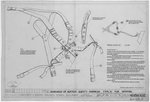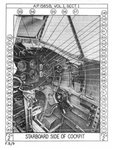Airframes
Benevolens Magister
As far as I've discovered so far, the composite seat was introduced with the second 'L' series serial batch, and was certainly in place by the 'R' serial blocks. I'm a bit wary about the flare rack on the MkV, as some former Spit pilots have told me it didn't have it, as they used the central, downward recognition light to flash the code of the day, rather than colour(s) of the day with flares. From what I've sort of pieced together, this was possibly due to some accidents, and possibly unexplained fatal losses, when the flare pistol fell out of it's 'holster' or 'bin', and jammed the controls. However, I worked (briefly) with one museum example of the MkVb, which had only been re-painted for display purposes, (plus some bodge-up of panels with glass fibre!) and this had the flare rack. Unfortunately, this particular Spit had been around so many places, and the origins of some parts were unknown, and other parts missing. The seat might have been original, or it could have been just 'available'.
As for the flare cartridges, the case itself was a mid-brown cardboard colour, basically the same as a 'bare' cardboard box, with a brass base and annulus, just like a shot-gun cartridge, only with a two inch bore. The colour of the filling (Red, Yellow, Green, Blue, White) was indicated by the appropriate coloured band, roughly one third of the case length, around the centre. Cartridge length could vary, depending on manufacturer, but was normally around four inches long.
As for the flare cartridges, the case itself was a mid-brown cardboard colour, basically the same as a 'bare' cardboard box, with a brass base and annulus, just like a shot-gun cartridge, only with a two inch bore. The colour of the filling (Red, Yellow, Green, Blue, White) was indicated by the appropriate coloured band, roughly one third of the case length, around the centre. Cartridge length could vary, depending on manufacturer, but was normally around four inches long.



